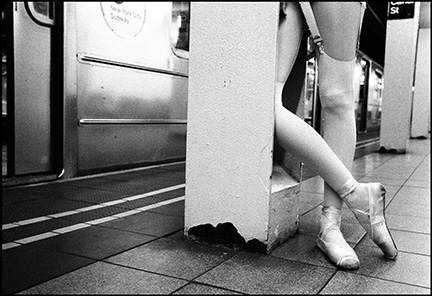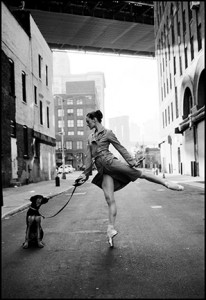 model
model
The New York City Ballerina Project: More Than “Ethereal” and Definitely On Pointe!
A woman walks into a room. Heads turn to stare. She radiates poise… ease… confidence. Her feet are endless, feet slightly turned out. Her arms are quietly chiseled. She has perfect posture. She seems to glide across the floor without any visible effort. She is, without a doubt, a ballerina.
A ballerina’s aesthetic appeal is perhaps the most recognizable of all sports. To the untrained eye, she might appear waif-ish, fragile, or weak. She has been referred to as “ethereal” by many a male choreographer. On the contrary, ballerinas have more strength and stamina than many professional athletes. Some of them can jump as high as basketball players, but the difference is that a ballerina must hold a beautiful position while launching her body through the air, spinning around and landing on one leg. It is her job to make it look easy.
The Ballerina Project has done a fabulous job illustrating these points, and we applaud the artist, Dane Shitagi, for doing such an amazing job displaying the soul of a dancer!
If you haven’t had the pleasure of The Ballerina Project yet, click here. Or read on to find out why ballerinas have true “MAS Appeal”…
A Dancer’s Appeal

model For hundreds of years, dancers have been the epitome of grace. They are the perfect combination of femininity and strength, calmness and power. They work harder, and with more discipline, than anyone else. They love what they do and give their entire being to a role, to an entire ballet, or to a simple rehearsal. The stage is their canvas, and their bodies are their paintbrush. They are expert movers as well as thinkers. Brilliant athletes and brilliant artists, their physiques must be perfect and their interpretation of a choreographer’s work sublime.
A Dancer’s Body

- model
The dancer’s trademark legs are painstakingly shaped through years of plies, tendues, jumps, and pirouettes. Their daily workout is specific. They have been practicing variations of the same ballet class since they were 5 years old. A huge part of a dancer’s physique is genetic, but with the sheer amount of repetition in their routine, it is no secret that most ballet dancers have similar shapes. By age 16 and post-puberty, it will be clear whether a student will have the body to continue into the professional ballet world. Those who don’t will find other forms of dance or other jobs entirely. Those who do will continue on the same path they’ve known, often since age 12.
In the end, a dancer is fueled by passion. Pain and injuries become obsolete. Dancers know that they must not miss a day, lest they become “out of shape.” Warm up class lasts nearly 2 hours, followed by 4-6 hours of rehearsals. The lucky ones get to go on and perform that same evening. This would not be possible if they did not truly love it. The life of a ballerina is not easy. Performing careers are short, girls often retire from the stage before age 35, and those who last that long are considered old. But you better believe that their bodies are machines right up until their final curtain call!
 Wendy Reinert, CSCS
Equinox Fitness Coach
Professional Dancer
Equinox Fitness Clubs NYC
Wendy Reinert, CSCS
Equinox Fitness Coach
Professional Dancer
Equinox Fitness Clubs NYC
Photo Credit: Dane Shitagi
NOTICE: None of the celebrities or individuals discussed here have ever received treatment, surgery, medical advice, or evaluations from any author, physician, surgeon, or representative of this blog. All images and photos in this article represent models only. No actual patients or clients are shown.
